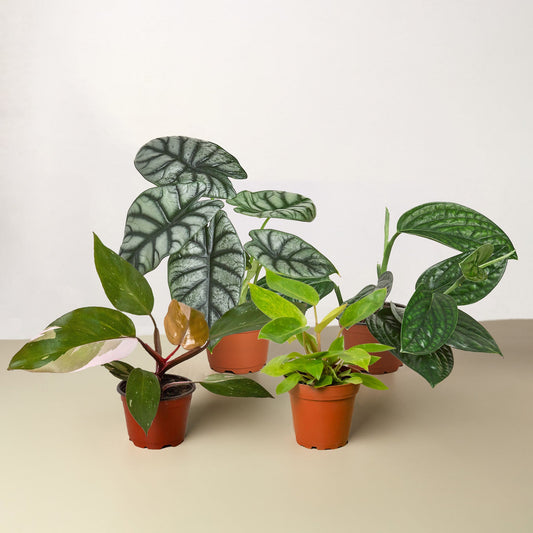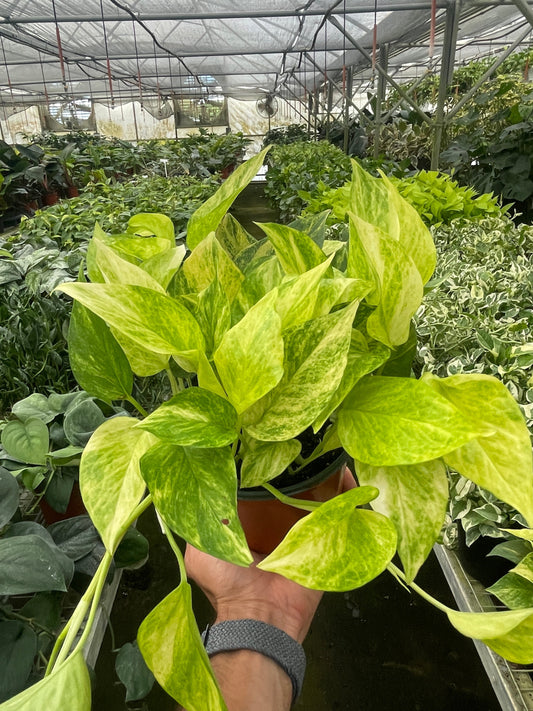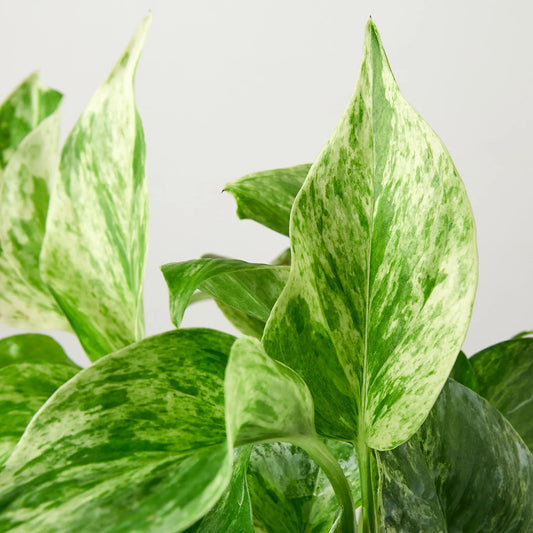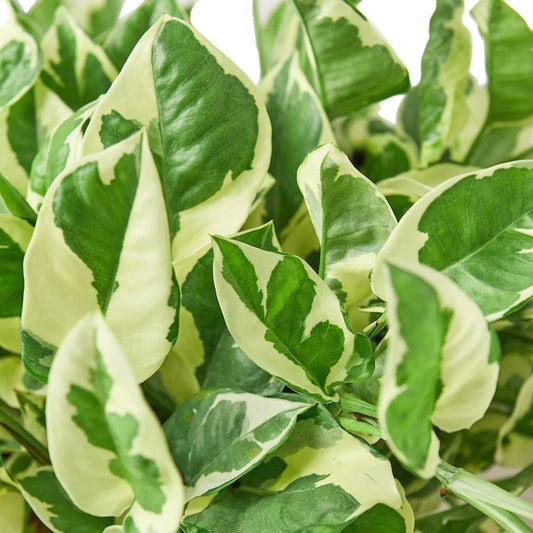Orchid Aerial Roots: Everything You Need to Know
Cafe Planta Team
Orchids, with their exotic appearance and elegant blooms, have captured the hearts of many plant lovers. But when it comes to their care, one topic that often sparks curiosity is their aerial roots. You might have noticed these peculiar roots sprawling out from your orchid’s pot, defying gravity and seemingly doing their own thing.
This article will take you through everything you need to know about orchid aerial roots. We'll discuss what they are, why they grow the way they do, and how you can care for them to keep your orchid thriving. Whether you're a seasoned orchid grower or a curious beginner, you'll find insights and tips to help you understand and nurture these fascinating plants.
Orchid Aerial Roots: What Are They?
Let’s start by understanding what these aerial roots actually are. In their natural habitat, orchids are epiphytic, meaning they grow on other plants rather than in soil. Imagine them clinging to tree trunks in a tropical rainforest, drawing moisture and nutrients directly from the air.
This unique lifestyle gives rise to aerial roots. Unlike the roots of your typical houseplant that burrow deep into the soil, orchid roots grow outward and upward. They are covered in a spongy tissue called velamen, which helps absorb moisture and nutrients from the air—pretty nifty, right?
These roots not only provide physical anchorage but also play a crucial role in the plant's survival by capturing water and nutrients from the environment. They are essentially the plant's lifeline, adapting to whatever nature throws their way. It’s like having a built-in superpower to thrive even in the most unexpected places.
Why Do Orchid Aerial Roots Grow the Way They Do?
Orchid aerial roots might seem a bit rebellious, sticking out in every direction. But there’s a method to their madness. Their growth pattern is all about survival and efficiency.
In the wild, orchids rely on their aerial roots to latch onto trees and other surfaces, allowing them to position themselves for optimal light and air circulation. This strategic placement helps them capture rainwater and dew, keeping them hydrated and nutrient-rich. The roots also provide stability, holding the plant firmly in place even when the wind blows.
At home, these roots can reach out for similar reasons. They might be searching for more light, moisture, or simply space to grow. If your orchid is happy and healthy, its aerial roots will be actively exploring their surroundings. Think of them as the plant's curious explorers, venturing out to ensure the orchid gets everything it needs to flourish.
Should You Trim Orchid Aerial Roots?
Seeing those roots popping out of the pot, you might be tempted to give them a trim for a tidier appearance. But hold on—trimming aerial roots is generally not recommended. Cutting them can stress the plant and potentially lead to health issues.
These roots are vital for the orchid's well-being, helping with water and nutrient absorption. Trimming them could disrupt the plant’s balance, leading to dehydration or nutrient deficiencies. If they're getting in the way or you find them aesthetically displeasing, consider guiding them back into the pot or providing a larger space for them to spread naturally.
However, if you notice any roots that are dry, shriveled, or clearly dead, it’s okay to prune them. Use a sterilized pair of scissors to make a clean cut, minimizing the risk of infection. Remember, a healthy root is firm and greenish or white, while a dead root will appear brown and brittle.
How to Care for Orchid Aerial Roots
Caring for orchid aerial roots is all about mimicking their natural environment. Here are some practical tips to ensure these roots stay healthy and functional:
- Humidity: Orchids love humidity, so aim to keep the air around your plant moist. You can use a humidity tray or a room humidifier to maintain the right levels.
- Watering: Water your orchid thoroughly, allowing the aerial roots to absorb moisture. Be careful not to overwater, as too much water can lead to root rot.
- Lighting: Provide bright, indirect light to encourage healthy root growth. Avoid harsh direct sunlight that can dry out and damage the roots.
- Air Circulation: Ensure good airflow around your plant. This helps prevent fungal infections and encourages the roots to thrive.
Caring for these roots might seem like a balancing act, but once you get the hang of it, you'll find it quite rewarding. Your orchid will thank you with vibrant blooms and healthy growth.
Potting and Repotting Considerations
When it comes to potting, the choice of medium and container can influence the health of your orchid's aerial roots. Orchids thrive in a loose, well-draining mix, often composed of bark, moss, and perlite. This mimics their natural epiphytic conditions, allowing the roots to breathe and access moisture easily.
As for containers, breathable pots like those made from clay or those with side slats are ideal. They offer excellent aeration and drainage, preventing root suffocation and rot. When repotting, be gentle with the aerial roots. Soak them first to make them more pliable, then carefully work them into the new mix, encouraging them to find their way naturally.
Repotting should be done every couple of years or when the potting mix breaks down, as decomposing material can negatively affect root health. Choose a slightly larger pot to accommodate root growth, but avoid going too big, as this can lead to moisture retention issues.
Common Problems with Orchid Aerial Roots
Even with the best care, you might run into a few hiccups with your orchid’s aerial roots. Here are some common issues and how to tackle them:
- Root Rot: Caused by overwatering, root rot is a serious problem. If you spot mushy, discolored roots, reduce watering and ensure proper drainage.
- Dry Roots: This can happen when humidity is too low. Increase humidity levels and ensure your orchid is getting enough water.
- Pests: Keep an eye out for pests such as mealybugs or spider mites. Treat infestations promptly with insecticidal soap or neem oil.
- Fungal Infections: Ensure good air circulation and avoid water sitting on the roots to prevent fungal issues.
Being proactive and observant can save your orchid from potential problems. Regularly check the roots for any signs of trouble and adjust your care routine as needed.
Integrating Orchids into Your Home Decor
Orchids are not just fascinating plants; they can also be stunning additions to your home decor. Their unique aerial roots add an element of intrigue and natural beauty to any space.
When placing orchids in your home, consider areas with indirect light, like near a north or east-facing window. Their graceful forms can complement a variety of interior styles, from minimalist to bohemian. You can even use decorative pots and stands to elevate their beauty—literally and figuratively.
Group orchids with other houseplants for a lush, tropical vibe, or let them stand alone as a statement piece. Their presence can bring a touch of elegance and serenity, creating a calming atmosphere in your home.
Creating a Thriving Orchid Collection
Once you've mastered the care of one orchid, you might find yourself wanting more. And why not? With so many varieties and colors to choose from, orchids can become a captivating collection.
When expanding your collection, consider different species and hybrids. Each type has its own unique care requirements, so do a little research to match your growing conditions. Some might prefer cooler temperatures, while others thrive in warmth.
Remember to space them out, allowing each plant room to breathe and grow. This spacing also helps prevent the spread of pests and diseases. And don’t forget to rotate your plants occasionally to ensure even growth and exposure to light.
Final Thoughts
Orchid aerial roots are more than just a quirky feature—they're an integral part of what makes orchids special. By understanding their role and providing proper care, you can keep your orchid healthy and beautiful.
At Cafe Planta, we're passionate about helping you succeed in your plant journey. Whether you're looking for new additions to your collection or need advice on care, we're here to assist. Feel free to reach out to us via email or connect with us on Instagram. We believe plants connect us to nature and each other, and we’re excited to share this journey with you.



















